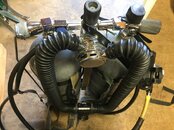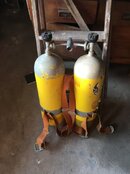Blackcrusader
Contributor
Although recreational diving can be very safe, DAN wouldn't have to compile accident statistics if diving were as safe as a walk in the woods
A walk in the woods where I live can be more dangerous than the diving I do. My wife calls me Dances With Cobra's. Where I live vipers, cobras, pythons, killer hornets, bears, wild boar, monkeys and other nasty critters live. I live in their domain. Recently a few of our cats died after being bitten by snakes. The only thing missing up my way are mountain lions as we don't have them in Taiwan.








